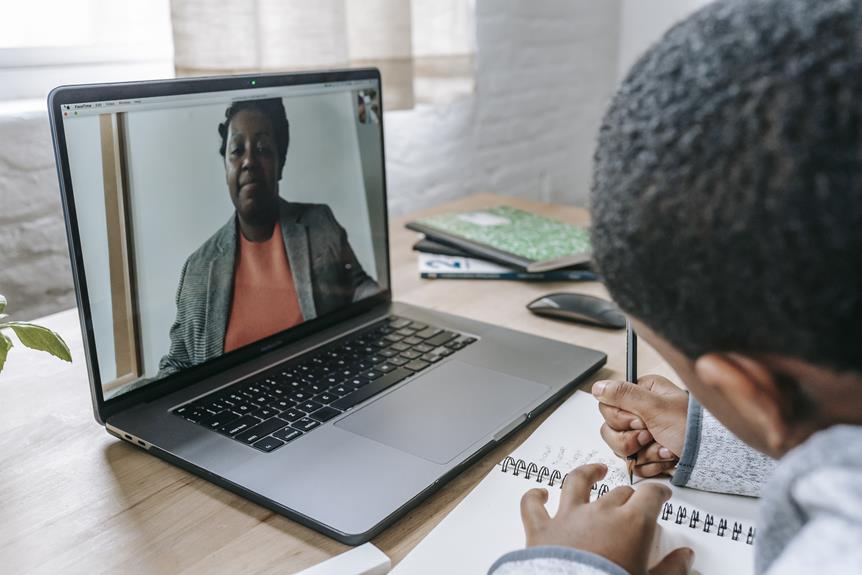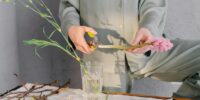To Perform a Breast Self-Exam: Step-by-Step Guide

In the pursuit of safeguarding our health, knowledge is power. By equipping ourselves with the necessary tools and skills, we empower ourselves to take charge of our well-being.
In this step-by-step guide, we present a comprehensive approach to performing a breast self-exam, a vital practice in detecting early signs of potential abnormalities.
With empathy and service in mind, we aim to provide you with the knowledge and confidence to actively participate in your own health journey.
Key Takeaways
- Breast self-exams are a proactive approach to one's own health and can lead to early detection of breast cancer.
- Performing regular self-exams helps individuals become familiar with the normal look and feel of their breasts, making it easier to detect changes or abnormalities.
- The visual examination of the breasts in front of a mirror is important to look for changes in size, shape, contour, skin, and nipples.
- Palpating the breasts for abnormalities using specific techniques and checking the armpits and surrounding areas for lymph node abnormalities is crucial for detecting potential signs of breast abnormalities.
Understanding the Importance of Breast Self-Exams
When it comes to understanding the importance of breast self-exams, a proactive approach to one's own health is essential. Breast self-exams are a powerful tool for early detection of breast cancer and can potentially save lives.
By performing regular self-exams, individuals can become familiar with the normal look and feel of their breasts, making it easier to identify any changes or abnormalities. The benefits of breast self-exams include the ability to detect lumps or other warning signs at an early stage, which can lead to prompt medical attention and increased chances of successful treatment. Early detection is crucial in the fight against breast cancer, as it allows for more treatment options and potentially better outcomes.
By understanding the importance of breast self-exams, individuals can take a proactive role in their own health and well-being.
Now, let's move on to the next section and discuss how to prepare for your breast self-exam.
Preparing for Your Breast Self-Exam
It is crucial to thoroughly prepare for your breast self-exam by gathering the necessary materials, such as a mirror, lotion or oil, and a comfortable, well-lit space. Breast self-exams are an important tool in detecting any changes or abnormalities in the breasts. By performing regular self-exams, individuals can become more familiar with the normal look and feel of their breasts, making it easier to identify any potential issues.
To perform a breast self-exam, start by visually inspecting the breasts in front of a mirror, noting any changes in size, shape, or texture. Next, use the pads of your fingers to feel for any lumps or thickened areas in the breast tissue. Remember to also check the armpit area and the area above the collarbone.
It is recommended to perform a breast self-exam once a month, preferably a few days after your menstrual period. If you no longer have periods, choose a specific day each month to perform the exam. Regular self-exams, along with clinical breast exams and mammograms, can contribute to early detection and treatment of breast cancer.
Step 1: Visual Examination of the Breasts
During the visual examination of the breasts, it is important to carefully observe for any asymmetry or changes in color or texture. This step is crucial in detecting any potential signs of breast abnormalities. Here are some breast self-exam techniques and common signs to look out for:
- Inspect each breast in front of a mirror, with arms relaxed and then raised above the head.
- Look for any changes in size, shape, or contour of the breasts.
- Observe for any dimpling, puckering, or redness of the skin.
- Pay attention to any changes in the nipples, such as inversion or discharge.
By performing a thorough visual examination, individuals can become familiar with their breasts and notice any changes that may require further investigation.
Transitioning into the next step, palpating the breasts for abnormalities, is essential in ensuring a comprehensive self-exam.
Step 2: Palpating the Breasts for Abnormalities
Thoroughly and skillfully palpating the breasts is a crucial step in detecting any potential abnormalities, allowing individuals to take proactive measures for their breast health.
By using specific breast examination techniques, such as the circular motion, vertical strip, or wedge technique, one can effectively identify any breast abnormalities. These techniques involve using the pads of the fingers to carefully feel for any lumps, bumps, or changes in the texture of the breast tissue.
It is important to palpate both the inner and outer areas of the breasts, as well as the surrounding lymph nodes under the armpit and along the collarbone.
Regular and systematic breast self-exams can empower individuals to detect any changes early on and seek medical attention promptly, increasing the chances of successful treatment and positive outcomes.
Step 3: Checking the Armpits and Surrounding Areas
While examining the armpits and surrounding areas, individuals should pay close attention to the lymph nodes for any abnormal swelling or tenderness. The armpit examination is an important step in a breast self-exam as it allows individuals to check for any signs of breast cancer or other abnormalities.
Here are some key points to consider during a lymph node check:
- Gently palpate the lymph nodes under the armpit using the pads of your fingers.
- Look for any enlarged lymph nodes or lumps that feel different from the surrounding tissue.
- Note any tenderness or discomfort during the examination.
Checking the armpits and surrounding areas is crucial because lymph nodes in this region can sometimes be the first place where breast cancer spreads. By regularly conducting an armpit examination and checking for any changes or abnormalities, individuals can take proactive steps towards their breast health and seek medical attention if necessary.
Frequently Asked Questions
How Often Should I Perform a Breast Self-Exam?
Performing a breast self-exam is recommended monthly for women aged 20 and above. Regular self-exams help detect any changes, such as lumps or abnormalities, and can contribute to early detection of breast cancer.
What Are the Potential Signs or Symptoms of Breast Cancer That I Should Look for During a Self-Exam?
Potential signs or symptoms of breast cancer that should be looked for during a self-exam include lumps or thickening, changes in size or shape, nipple changes, skin dimpling, or nipple discharge. Early detection is crucial in breast cancer for better treatment outcomes.
Are There Any Risk Factors That Increase the Likelihood of Developing Breast Cancer?
Certain risk factors, such as age, gender, family history, and genetic mutations, can increase the likelihood of developing breast cancer. However, adopting preventive measures like maintaining a healthy lifestyle and regular screenings can help reduce the risk.
Should I Consult a Healthcare Professional if I Find a Lump or Any Abnormalities During a Self-Exam?
If a lump or any abnormalities are detected during a self-exam, it is recommended to consult a healthcare professional for further evaluation. Early detection and prompt medical attention can improve outcomes and ensure appropriate management.
Is a Breast Self-Exam a Reliable Method for Detecting Breast Cancer?
A breast self-exam can be a useful tool in detecting breast cancer, but it should not be relied upon as the sole method for diagnosis. Regular mammograms and consultation with a healthcare professional are recommended.









